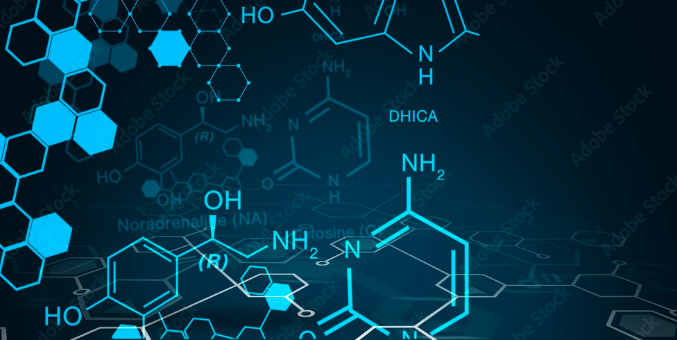
The chemical industry is one of the most important industries worldwide. The chemical industry must have a smooth operation, as it spans all chemical production and distribution aspects. There are many moving parts and many stakeholders involved in maintaining smooth operations.
Chemical supply chains have changed and adopted digital technologies in the last few decades. This trend is not surprising as chemical companies are turning to artificial intelligence (AI) tools for various purposes, including chemical production optimization, chemical allocation management, risk assessment and mitigation, and inventory control. As a result, artificial intelligence (AI) is revolutionizing supply chain management. It is a tool that optimizes performance at all levels of the supply chain to improve chemical supply chain performance, increase profits and protect human health.
The Shape of the Chemical Industry
The chemical industry is one of the most important economic sectors worldwide. 96% of all manufactured goods are dependent on chemicals. Chemical manufacturers produce more than $4 trillion annually in chemicals (global revenue for the chemical industry). This is a global, highly competitive industry with a comprehensive product range. It can be divided into various different groups:
- Glycoscience – Glycans, complex biomolecules made of sugars, play an essential role in the chemical industry and can significantly impact how cells or proteins function. Glycoscience provides resources to scientists to better understand the role glycans play in biology.
- Petrochemicals – Chemical products derived from chemical reactions of petroleum and other fossil fuels (gas, coil) or renewable fuels (palm oil maze, maze) by the refinery process.
- Agrochemicals and Fertilizers – chemical products that are used in agriculture and gardening to promote growth, health (fertilizers), or safety (pesticides).
- Commodity Chemicals (or Bulk Chemicals)– Chemical products such as rubber and plastics, chemical fibers, detergents and solvents, adhesives, cleaning compounds, and other chemicals are primarily used for bulk chemical supplies in the USA.
- Specialty Chemicals – chemical products that have a specific function or industry. They include paints and coatings, colors, cosmetics additives, flavor, food additives, and fragrances.
- Pharmaceuticals – a specific branch because of the product’s specifications and regulations. There are many challenges and opportunities in the SCM for pharmaceuticals.
Chemical manufacturing and downstream processing industries rely on bulk chemical supplies in the USA to obtain raw materials, products, and facilities that can process their goods. Therefore, the supply chain is focused on getting the correct amount of inventory where it is needed at all times while minimizing costs.
Current State of Chemical Supply Chain
The three main sectors that include stakeholders in chemicals are chemical distribution, chemical production, and chemical engineering.
- Chemical distributors are intermediate traders who purchase chemical products from chemical producers or other chemical distributors (breaking bulk) to fulfill orders for customers or retailers such as wholesalers, government agencies, etc. They profit from the difference in price between what they pay for a product and what they sell at retail.
- Chemical engineers provide solutions to real-life chemical problems. They have a chemical background and work with chemical professionals, engineers, scientists, etc., in various fields for the development of new chemicals or improvement/optimization of existing ones, including upgrading production processes, reducing environmental impact, or developing more environmentally friendly products.
- Chemical manufacturers are responsible for manufacturing chemical products. Chemical manufacturers use raw materials (chemical compounds, natural substances, or biological-based materials) to make chemical products through a chemical reaction process. There are many types of chemical producers.
So, how does the current supply chain for chemicals work? The existing supply chain includes chemical producers, distributors, and chemical manufacturers to meet product requirements. This begins with raw materials purchased from suppliers. Then, the process transforms these materials into chemical products. Distributors then sell these chemical products to customers across a variety of industries. Chemical manufacturers have to manage complex supply chains, which involve hazardous and perishable ingredients.
Chemical manufacturing is susceptible to product characteristics such as potency, color, and composition. Variations in product characteristics can vary from batch to batch. As a result, they are more likely to provide compounds with undesirable properties to customers. This can impact business results in terms of safety, quality, profitability, and other essential aspects. Therefore, flexibility and excellent planning skills are required to adjust formulas according to available ingredients and ensure that finished products meet customer and regulatory requirements.
The Future of the Chemical Supply Chain
What will the future look like? What should be the long-term vision and the high-level focus for the chemical supply chain?
Chemical companies must consider how they can improve their resource management, reduce wastage and meet customer and market needs to provide a viable chemical system in the future. It should shift towards a circular economy that creates customer value through operational change. Following are the key things to focus on for the future of the chemical supply chain:
- Innovation is a driving force in the market,
- Collaboration with customers to improve products, tailoring to specific needs and potential applications.
- Provide a range of products and services for the end market.
- Supplying products to a broader range of customers or markets.

